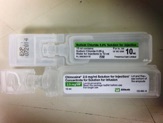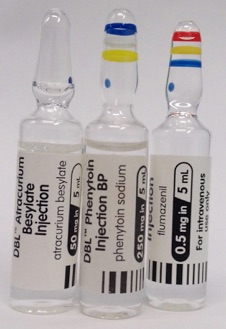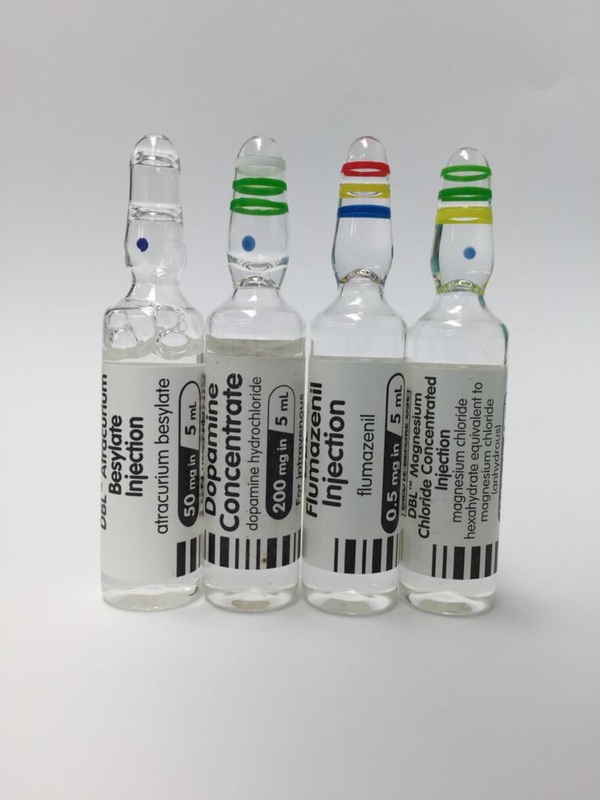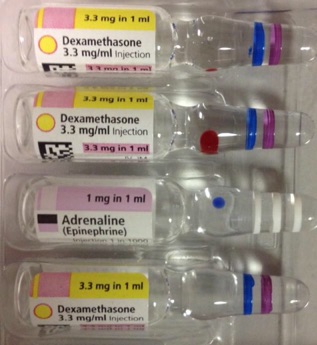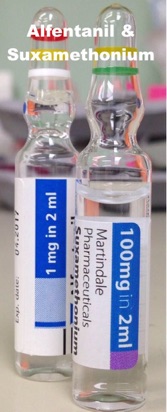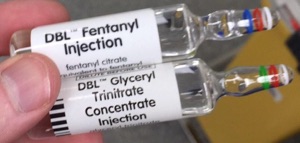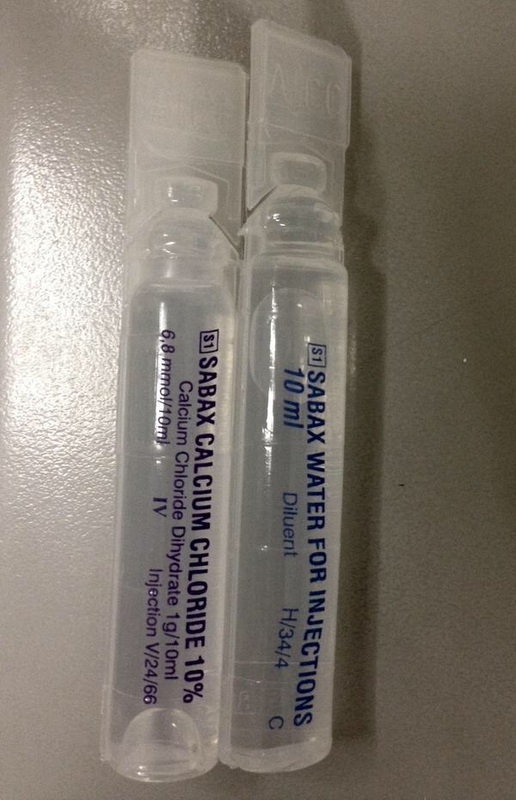Look-alike Medications
The following are just a few examples of “look-alike packaging” from around the world. Most of these are still currently in clinical circulation, exposing patients to the risks described below.
Oxytocin & Glycopyrrolate
|
The pharmaceutical manufacturer has worked collaboratively with regulatory bodies to alter the labelling and improve the ability to distinguish between these two drugs. The realities of the process of design approval, manufacture and the time required for depletion of existing stocks, however, mean that these look-alikes remained in clinical areas, exposing patients to ongoing risk, for over 6 months after multiple Victorian hospitals submitted concerns about this packaging in response to "near miss" events.
Although existing stocks of the look-alike packaging of oxytocin should now be almost depleted, this underscores the need for mandatory packaging requirements to prevent packaging like this being allowed to be released in the first instance - prevention rather than cure. |
The ampoule on the left contains glycopyrrolate, a medication commonly used during general anaesthesia as part of the process of waking the patient at the end of surgery.
The ampoule on the right contains oxytocin, a medication which is used to make the uterus contract in a variety of different situations. In addition to the obvious similarity between these ampoules, having the text printed directly on glass makes them difficult to read, particularly given their small size. Whilst glycopyrrolate can be safely administered to a pregnant woman having an anaesthetic, inadvertent substitution of the equivalent volume of oxytocin will result in severe uterine contractions, likely to cause serious harm or death to the unborn foetus. This report in The Age describes the consequences of accidental administration of high dose oxytocin in pregnancy
|
Normal Saline & Local Anaesthetics
|
Normal saline (0.9% sodium chloride) is a mixture of water and electrolytes that does not contain any drugs. It has no pharmacological effect on the body when administered intravenously.
Local anaesthetics are injected close to nerves to numb parts of the body & reduce pain. Administered intravenously in sufficient doses, however, local anaesthetics can cause seizures & cardiac arrest. The upper image shows two bags of normal saline on the left & a bag of local anaesthetic on the right. Intravenous fluids such as normal saline commonly come in a variety of sizes and shapes so it is forseeable that this packaging could result in the inadvertent administration of intravenous local anaesthetic with potentially life threatening consequences. The lower image depicts two ampoules, the upper one contains normal saline (0.9% sodium chloride) and the lower a local anaesthetic agent. Again the similarity of the packaging increases the potential for unintentional intravenous administration of local anaesthetic. Conversely, whilst inadvertent substitution of sodium chloride solutions for local anaesthetic will not have any adverse pharmacological effects, it will result in unnecessary pain for the patient. |
This BBC News report describes patient deaths which have occurred as a result
of substitution of intravenous fluids with local anaesthetic
of substitution of intravenous fluids with local anaesthetic
Atracurium, phenytoin, Flumazenil, Dopamine & Magnesium
|
Although the three ampoules in the upper image look very similar, they contain very different medications.
The lower image includes atracurium (far left) & flumazenil (second from right) in exactly the same size & design of packaging as the upper image but also contains two additional look-alike medications:
All of these drugs have the potential to cause dangerous side effects if given accidentally. Additionally when substitutions of look-alike medications occur, there is the potential for harm to result from the omission of the intended drug, if the error is not recognised. For example, inadvertent administration of atracurium instead of phenytoin to a patient experiencing seizures would appear to terminate the seizure (due to the onset of muscle paralysis) whilst the electrical seizure activity in the brain would remain untreated, with potentially harmful neurological effects. |
Other look-alike medications
Below are more examples of look-alike drugs, many of which could result in potentially life-threatening accidental substitutions



